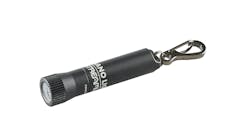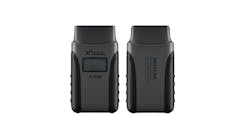Tool Review: Phil’s Probes and Services 11" Phil's Electrical Piercing Probe
When using piercing probes to monitor electrical signals, making a positive connection doesn’t always happen. But shop owner of Hilltop Auto Service in Byron Center, Michigan, Ken Elzinga, found that Phil’s Probes and Services 11” Phil’s Electrical Piercing Probe makes that positive connection every time.
In addition to making that connection, Elzinga was pleased with how the tool was able to save him time on repairs.
“The tool allowed me to pierce a wire to monitor its signal, which is much faster than back probing the wire at a connector,” Elzinga says. “This also allowed me to monitor the signal at any location in the circuit instead of just at a connector location.”
The easy-to-use probe can be operated one-handed, giving technicians more mobility during repairs, and comes with a simple instruction card describing the proper hand motion required to open the probe. Technicians should be aware of this because if they are accustomed to using a probe that "screws" into the wire, and they try that with this probe, it will destroy the tool.
Elzinga says he put the tool to work monitoring electrical signals to diagnose failures in components such as door switches, blower motors, ignition coils, and radiator cooling fans.
In his shop, there are four technicians who do the majority of the diagnostic work, and between the four of them the electric piercing probe gets used around two to four times per week.
“It is a good probe to use when you have to tap into a circuit,” Elzinga says. “We do use it carefully because here in Michigan we are always mindful of wire piercing with the possible water entry point made by a piercing probe. When we can access a circuit by back probing, we do that first, but sometimes you just have no other choice but to test at a spot where you have to pierce a wire.” This is where the Phil’s Electrical Piercing Probe comes in.
Even as the shop owner, Elzinga still spends most of his time out on the floor diagnosing vehicles and assisting his technicians with any jobs they may be working on. As a “lifelong auto tech”, he was pleased to find the probe is equipped with several spikes, unlike most other piercing probes that only have one spike. The multiple spikes ensure a positive connection every time, he notes.
One feature of the piercing probe Elzinga would like to see improved is slimming down the “bulky” design of the tool, which makes it difficult to use in tight spaces. In future renditions, the shop owner would also like to see an update to the opening for the hook. Currently, the opening is about 1” from the end of the tool. This makes it challenging to hook onto a wire if it is buried deep in a wire harness.
Overall though, Elzinga was pleased with the Phil’s Probes and Services 11” Phil’s Electrical Piercing Probe’s ease of use and ability to make a connection with every use.



